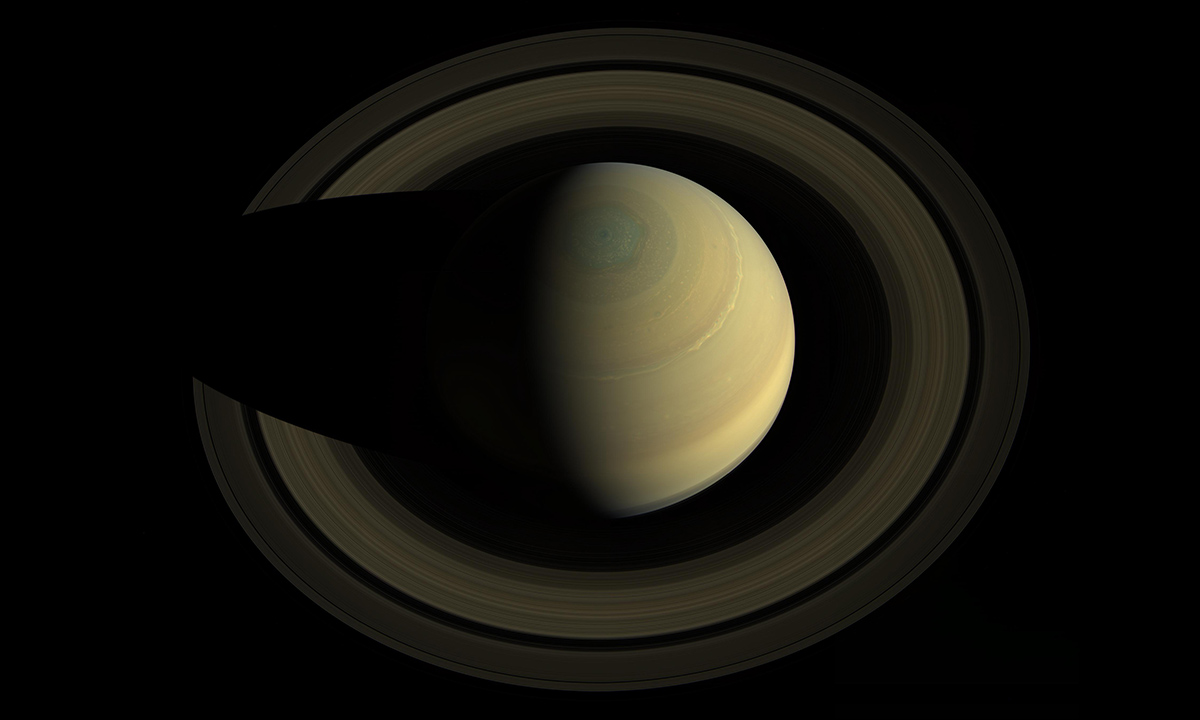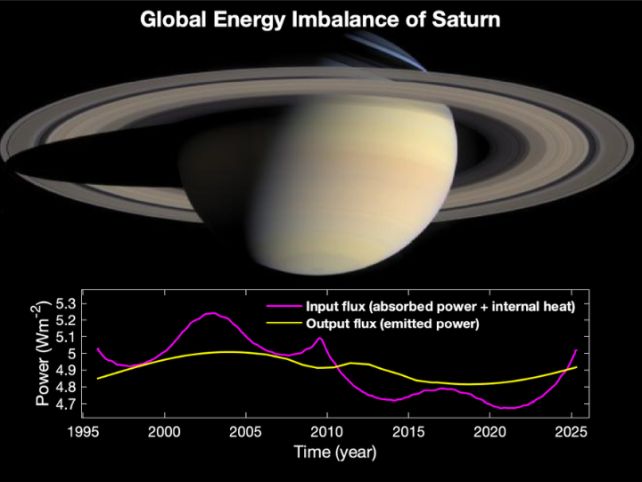Saturn’s climatic antics have caught the attention of astronomers. Scientists have discovered that the ring-shaped planet has a significant seasonal energy imbalance. The discovery marks a turning point in the understanding of weather and climate on gas giants, their evolution and constant change. The study is published in the journal Nature Communications.

“This is the first time that a global energy imbalance on a seasonal scale has been observed on a gas giant. Not only does this give us new insight into the formation and evolution of planets, but it also changes the way we should think about planetary and atmospheric science,” commented physicist Liming Li of the University of Houston.
Sunlight fills everything it hits with energy. Planets also lose energy in the form of heat radiation. In the case of gas giants like Saturn, there is also an energy source deep inside that affects the climate.
Cassini reveals a new feature of Saturn
A team led by Xinyue Wang of the University of Houston studied Cassini data on Saturn and found that the difference between the amount of energy it absorbs and the amount of energy it emits can vary by 16%, with fluctuations that coincide with the planet’s seasons.

This is due to Saturn’s distance from the Sun. Saturn’s orbit is elliptical, leading to an almost 20 percent difference between the nearest and farthest points from the Sun. When it is closer, Saturn receives more radiation, resulting in a seasonal energy imbalance. This is unlike Earth, which has a more circular orbit, so the contrast is less noticeable.
“In current models and theories of the atmosphere, climate and evolution of the gas giants, the global energy budget is assumed to be balanced. But we believe our discovery of this seasonal energy imbalance necessitates a reevaluation of those models and theories,” Wang explains.
New look at weathering the gas giants
This could mean that Saturn’s unbalanced energy may play a role in creating huge convective storms that penetrate deep into the atmosphere. Similar processes can occur on other gas giants such as Jupiter, which has an eccentricity slightly smaller than Saturn’s.
It may also help to better understand the weather on Earth, where the energy imbalance is less significant, but still not zero. And also on other gas planets, such as Neptune and Uranus, where the internal and external structure remains a mystery.
“Our data suggests these planets will have significant energy imbalances as well, especially Uranus, which we predict will have the strongest imbalance due to its orbital eccentricity and very high obliquity [tilt]. What we’re investigating now will identify limitations in current observations and formulate testable hypotheses which will benefit that future flagship mission,” says Wang.
We previously reported on how Saturn’s rings disappeared.
According to sciencealert.com


